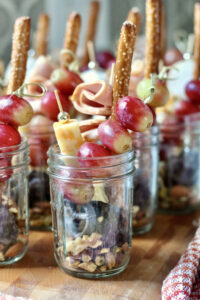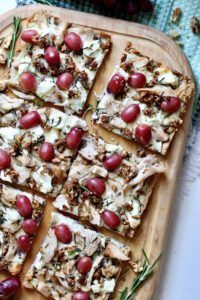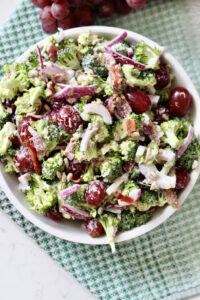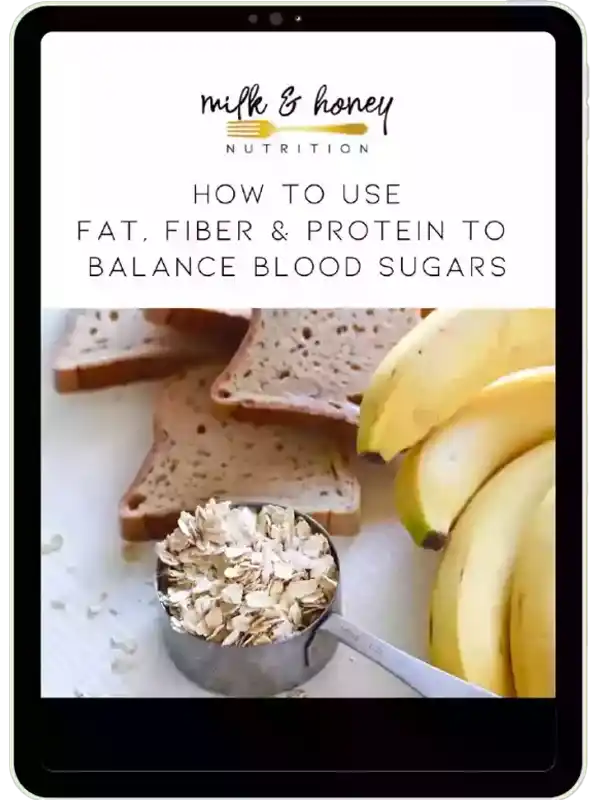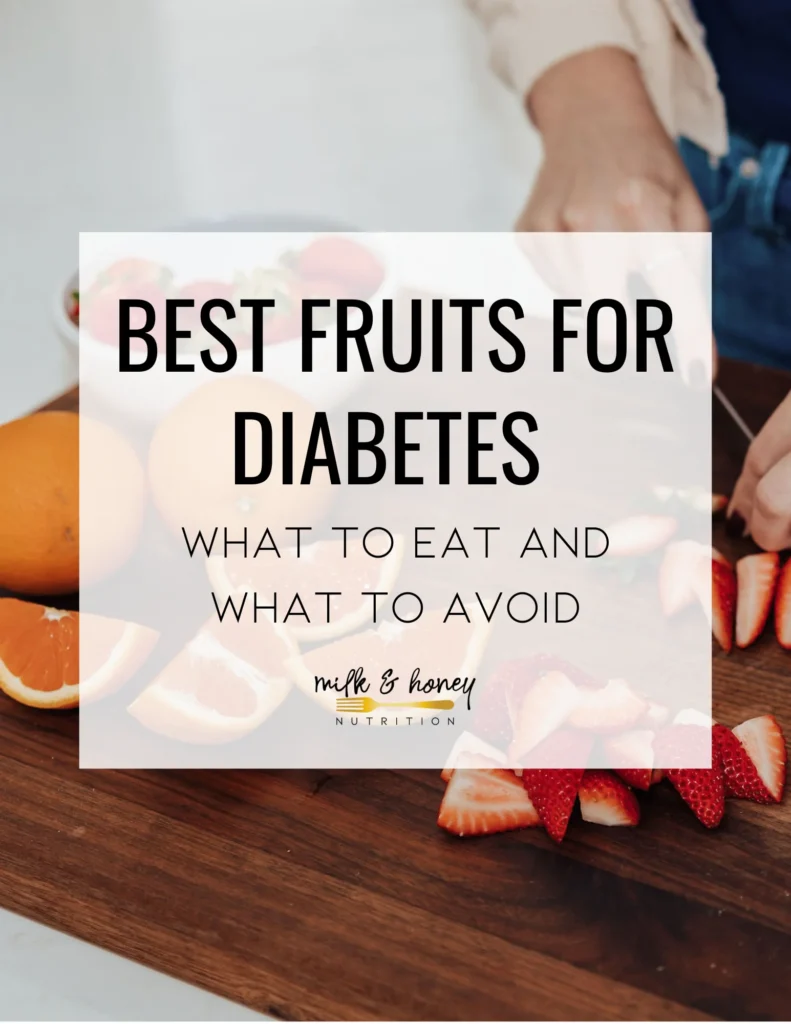
In this post we cover 15 of the best fruits for diabetes, and how to enjoy them.
Fruits as a whole offer vitamins, minerals, and fiber. But what are the best fruits for diabetes? Not all fruits impact blood sugar levels the same. While fruit is a natural source of sugar, the key lies in making balanced choices to maintain stable blood sugar levels.
Best and worst fruits for diabetes
While people with diabetes can enjoy all types of fruit in some form or capacity, there are some that are naturally lower in sugar and/or higher in fiber than others making them easier for people with diabetes to enjoy. In this article, we’ll break some of this down so I can help guide you to make the best decisions to manage your blood sugar.
What to look for in a diabetes-friendly fruit
So, what are the best fruits for people with diabetes to eat? There isn’t one answer to this question, but rather a set of things to look for or consider when choosing the best fruits for diabetes and how to enjoy them.
When selecting fruits, look at the following:
- Glycemic Index (GI): Choose low GI fruits. These fruits have a GI level of 55 or lower and will have less of an impact on blood sugar levels when eaten by themselves, compared to medium or high-GI fruits. Some medium or high GI fruits are great as well, but they should be paired with other protein and fiber sources for people with diabetes to best reap their nutritional benefits.
- Fiber Content: Choose higher-fiber fruits. Fiber slows down the absorption of carbohydrates (including sugar), which means stable blood sugars are more likely after eating.
- Portion Size: Even the lowest sugar and highest fiber fruits for diabetes can lead to elevated blood sugars if you consume too much. In the examples below, we’ll highlight recommended serving sizes too.
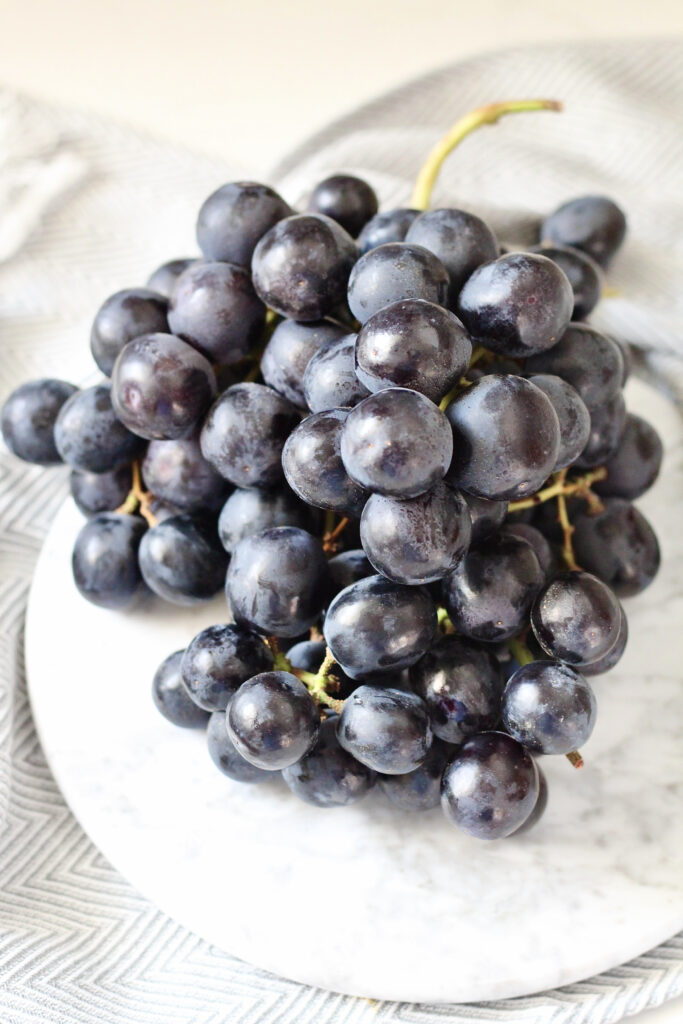
Considerations for Type 1 diabetes
In addition to fiber content and GI level, people with type 1 diabetes or people with other types of diabetes who are on insulin, should consider using a pre-bolus time with insulin injections. This allows the injected insulin to “keep up” with any potential rise in blood sugar.
Considerations for Type 2 diabetes and prediabetes
People with type 2 diabetes and prediabetes who aren’t on insulin should choose fruits that are higher in fiber (we cover those options below)… or pair lower-fiber fruits with other sources of fiber and/or protein.
Best Fruits for Diabetes Chart (with GI score)
This chart includes my top recommendations of fruits you can eat alone, and some runner-ups that I also recommend including in your snacks and meals paired with fiber and protein.
| Recommended serving size | Total Carb (g) | Sugar (g) | Fiber (g) | Glycemic Index (GI) Score | GI category | |
| Berries | 1 cup | 13-21g | 5-15g | 4-8g | 25-53 | Low |
| Cherries | 3/4 cup | 18g | 15g | 2.5g | 22 | Low |
| Apples | 1 medium apple | 25g | 19g | 4g | 36 | Low |
| Citrus fruit | 1 medium fruit | 15g | 12g | 3g | 43 | Low |
| Pears | 1 medium pear | 28g | 17g | 5.5g | 20-49 | Low |
| Kiwi | 2 kiwi fruit | 20g | 12g | 4g | 50 | Low |
| Dragonfruit | 6oz cubed | 22g | 13g | 5g | 50 | Low |
| Papaya | 1 cup cubed | 16g | 11g | 2.5g | 60 | Medium |
| Grapes | 1/2 cup | 14g | 12g | <1g | 45 | Low |
| Bananas | 1 small banana | 23g | 12g | 2.5g | 51 | Low |
| Mangoes | 1 cup, cubed | 26g | 23g | 2.5g | 51 | Low |
| Pineapple | 1 cup chunks | 22g | 16g | 2g | 59 | Medium |
| Watermelon | 1 wedge (about 10oz) | 22g | 18g | 1g | 76 | High |
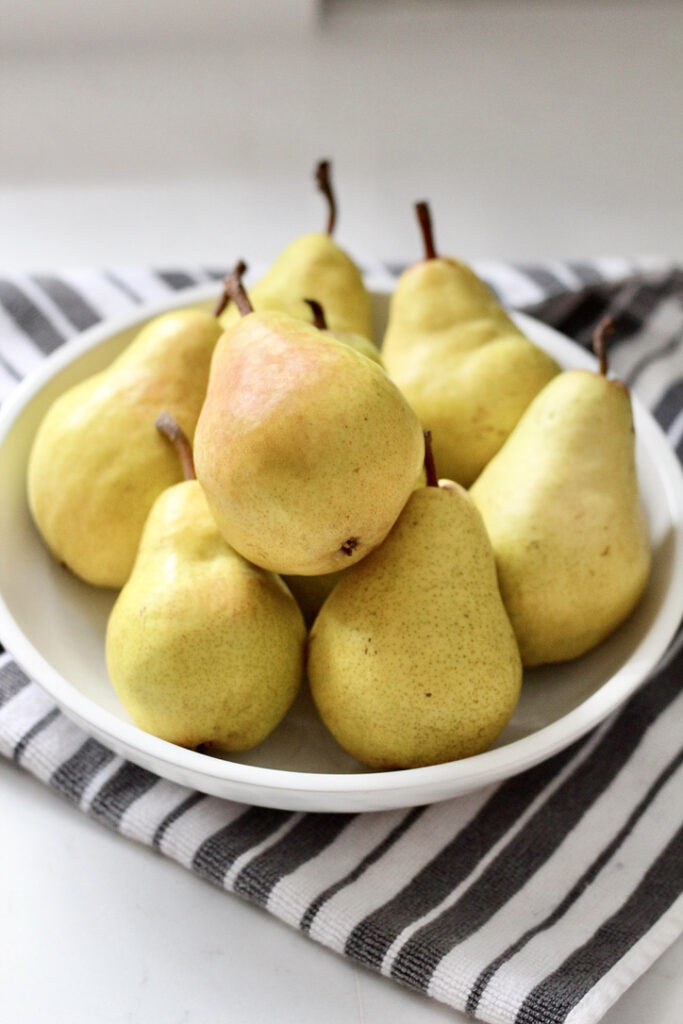
9 best fruits for diabetes (Can be eaten alone)
For most people with diabetes, fruits that are easiest to enjoy and can be eaten on their own are included below. Fruits with the highest amounts of fiber as well as lower amounts of sugar may be tolerated easiest by people with diabetes. While these fruits aren’t the only options, they can be easier to navigate. Here are my top 9 recommended fruits.
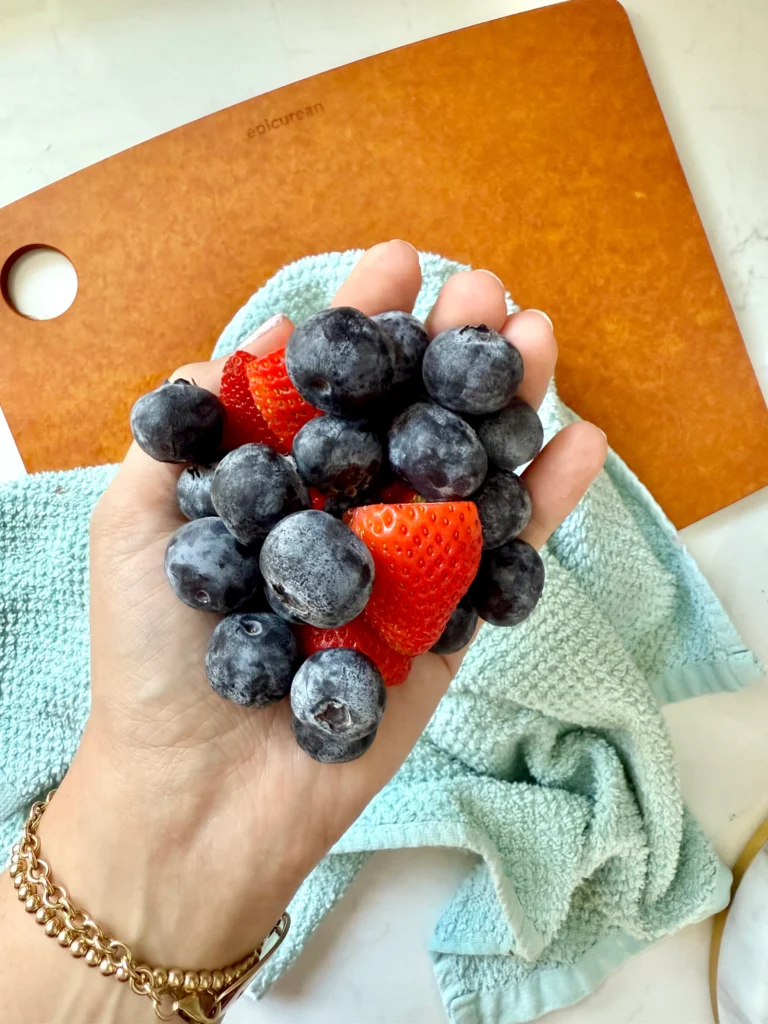
1. Berries
(Strawberries, Blueberries, Raspberries, Blackberries)
Why They’re Great: Berries are packed with antioxidants, fiber, and vitamins. They are a low GI fruit. You will consistently see berries listed as one of the best fruits for diabetes.
Tip: Pair them with Greek yogurt or enjoy a handful on their own for a fiber boost!
Recommended serving size: 1 cup
- Carbs: 13-21g
- Fiber: 4-8g
- Sugar: 5-15g
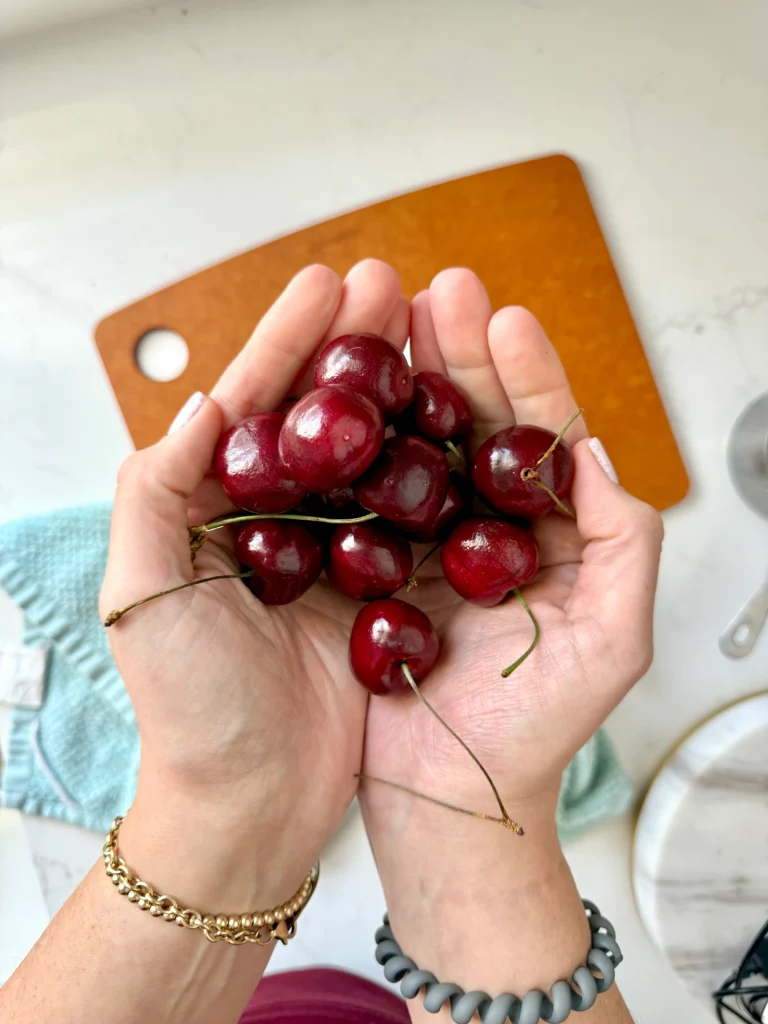
2. Cherries
Why They’re Great: Tart cherries have a low GI and are rich in antioxidants that may reduce inflammation.
Tip: Choose fresh or frozen cherries instead of canned or jarred varieties that have a lot of syrup.
Recommended serving size: 3/4 cup
- Carbs: 18g
- Fiber: 2.5g
- Sugar: 15g
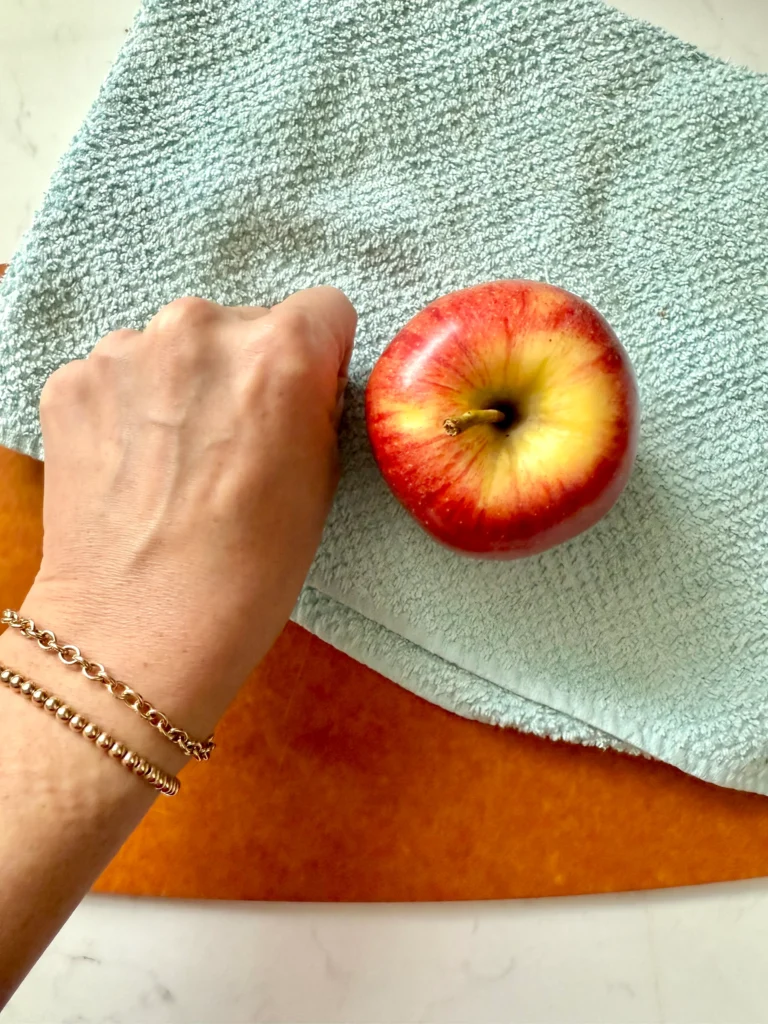
3. Apples
Why They’re Great: Apples are high in fiber, especially in the skin, which helps slow down carbohydrate absorption. They are a medium GI food.
Tip: Enjoy with a tablespoon of peanut butter for added protein and fat.
Recommended serving size: 1 medium apple
- Carbs: 25g
- Fiber: 4g
- Sugar: 19g
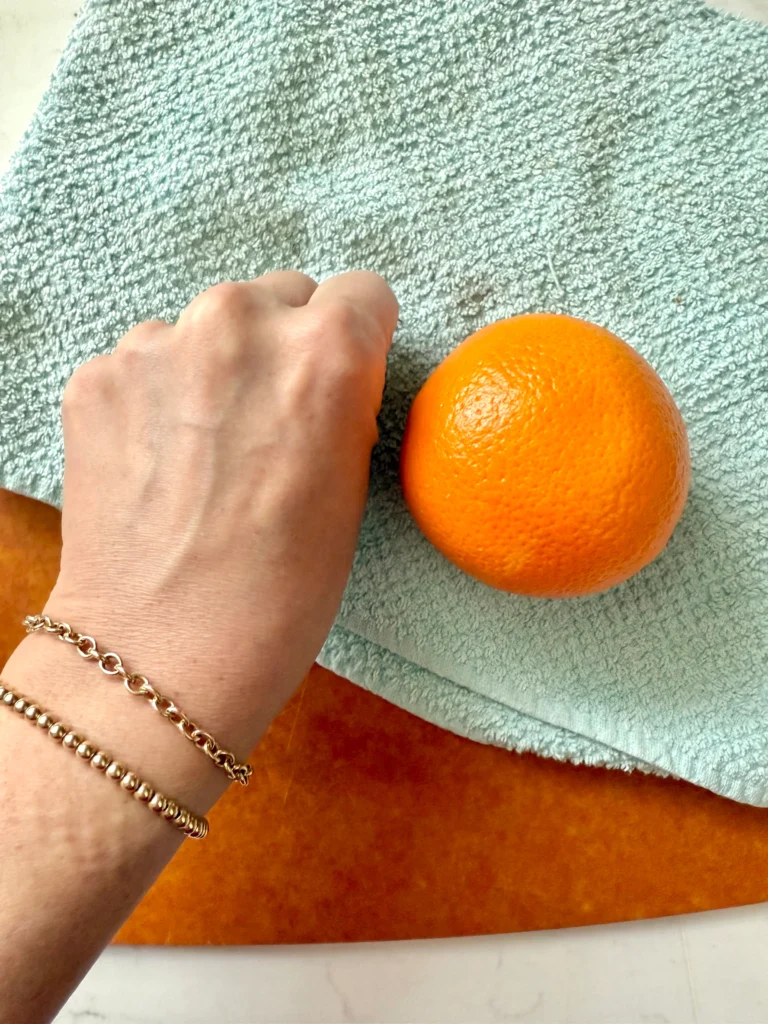
4. Citrus Fruits (Oranges, Grapefruits, etc.)
Why They’re Great: Citrus fruits are low-GI and packed with vitamin C and fiber. They may help improve heart health, which is important for those with diabetes.
Tip: Choose the whole fruit when looking for a snack instead of juice.
Recommended serving size: 1 medium orange
- Carbs: 15g
- Fiber: 3g
- Sugar: 12g
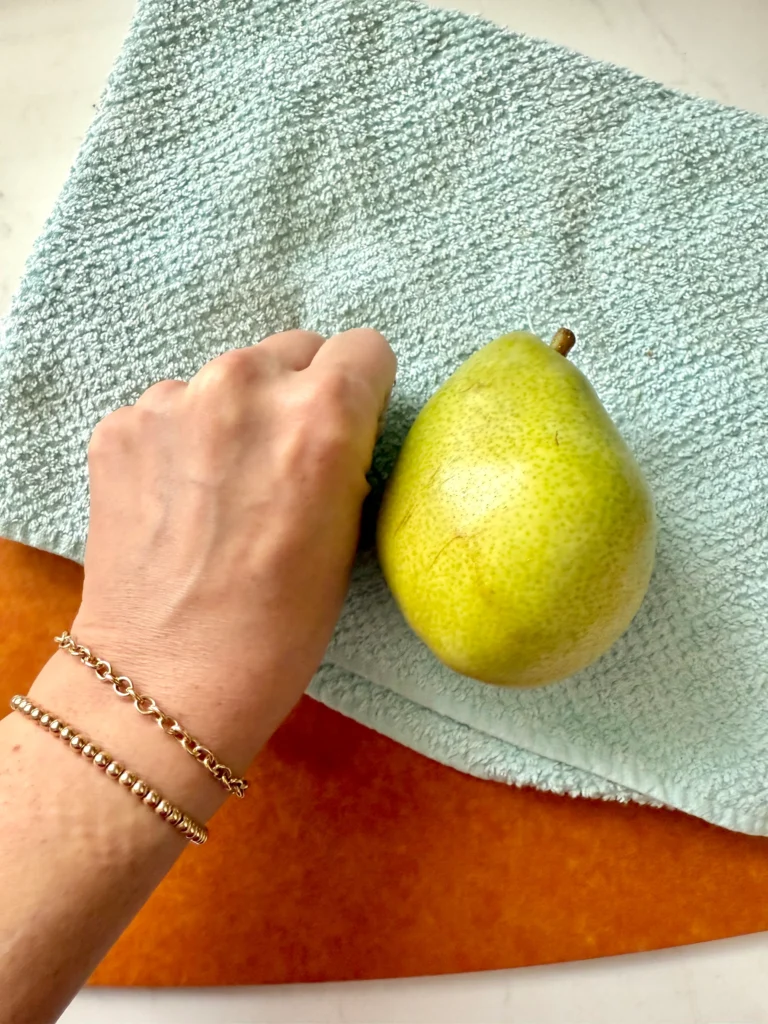
5. Pears
Why They’re Great: Pears are rich in fiber and vitamins, and their natural sweetness makes them super tasty.
Tip: Check out this post for a lot of yummy ways to enjoy pears!
Recommended serving size: 1 medium pear
- Carbs: 28g
- Fiber: 5.5g
- Sugar: 17g
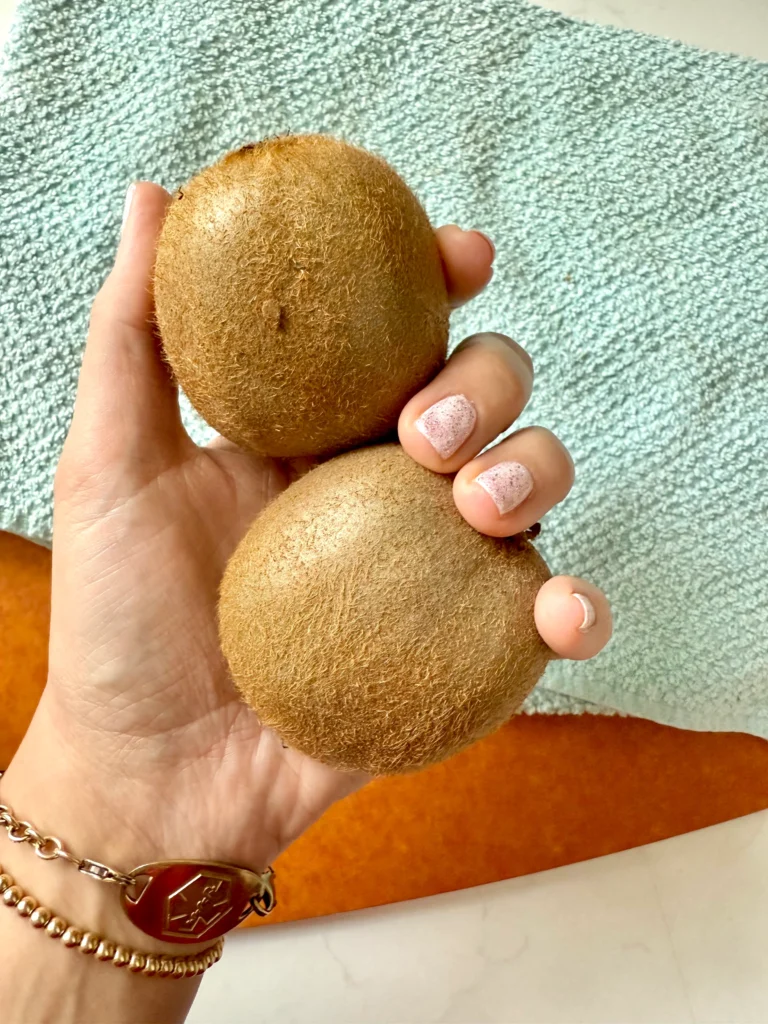
6. Kiwi
Why They’re Great: Kiwis are nutrient-dense, with vitamin C, potassium, and fiber. They also have a low GI.
Tip: Slice and eat as a snack or add to salads or on top of pancakes for a tasty twist. I also love their bright green color as a garnish on all kinds of dishes.
Recommended serving size: 2 kiwi fruit
- Carbs: 20g
- Fiber: 4g
- Sugar: 12g
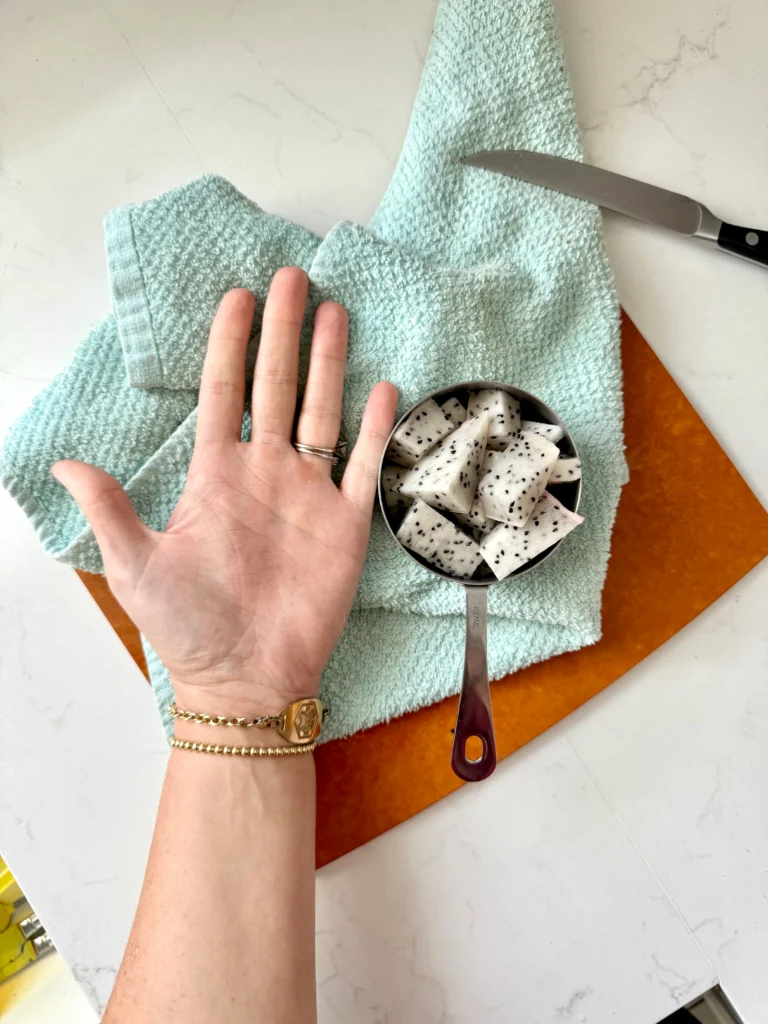
7. Dragonfruit
Why They’re Great: Dragonfruit are rich in fiber, vitamins, and iron, and even contain some plant-based fat!
Tip: Slice a dragonfruit in half and use a spoon to scoop out the insides.
Recommended serving size: 6oz cubed
- Carbs: 22g
- Fiber: 5g
- Sugar: 13g
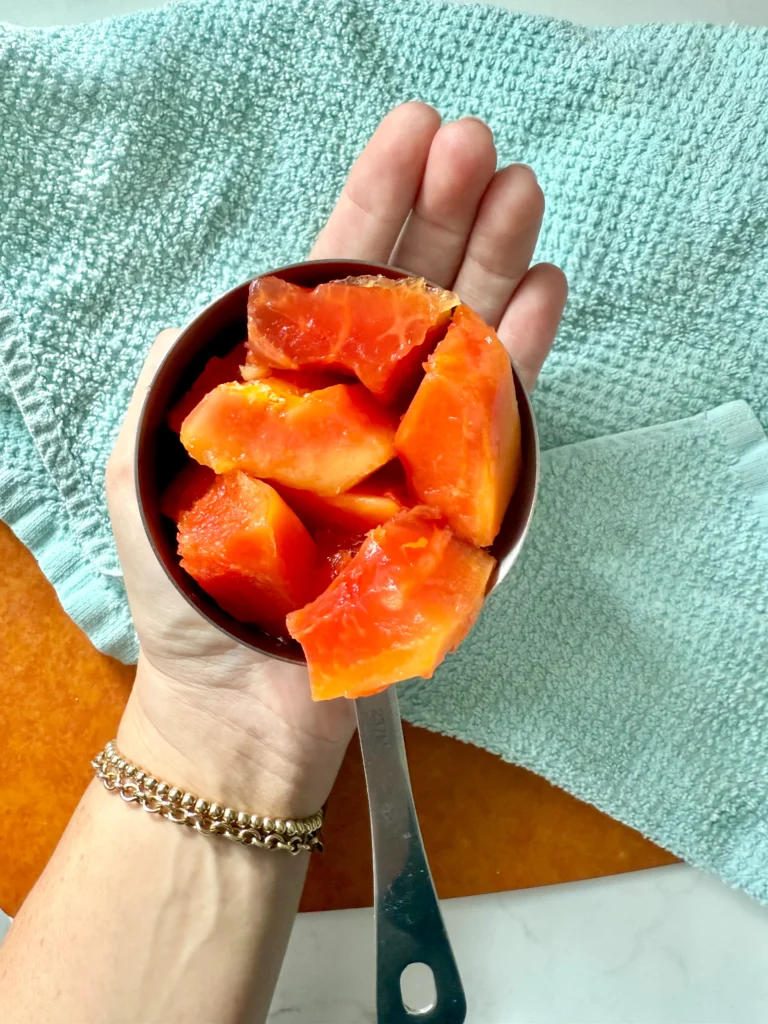
8. Papaya
Why they’re great: Papaya is rich in antioxidants which may boost immune health and help reduce inflammation. It also has a decent amount of fiber which is great for people with diabetes.
Tip: Enjoy papaya as a snack or as part of a yummy breakfast bowl.
Recommended serving size: 1 cup cubed
- Carbs: 16g
- Fiber: 2.5g
- Sugar: 11g
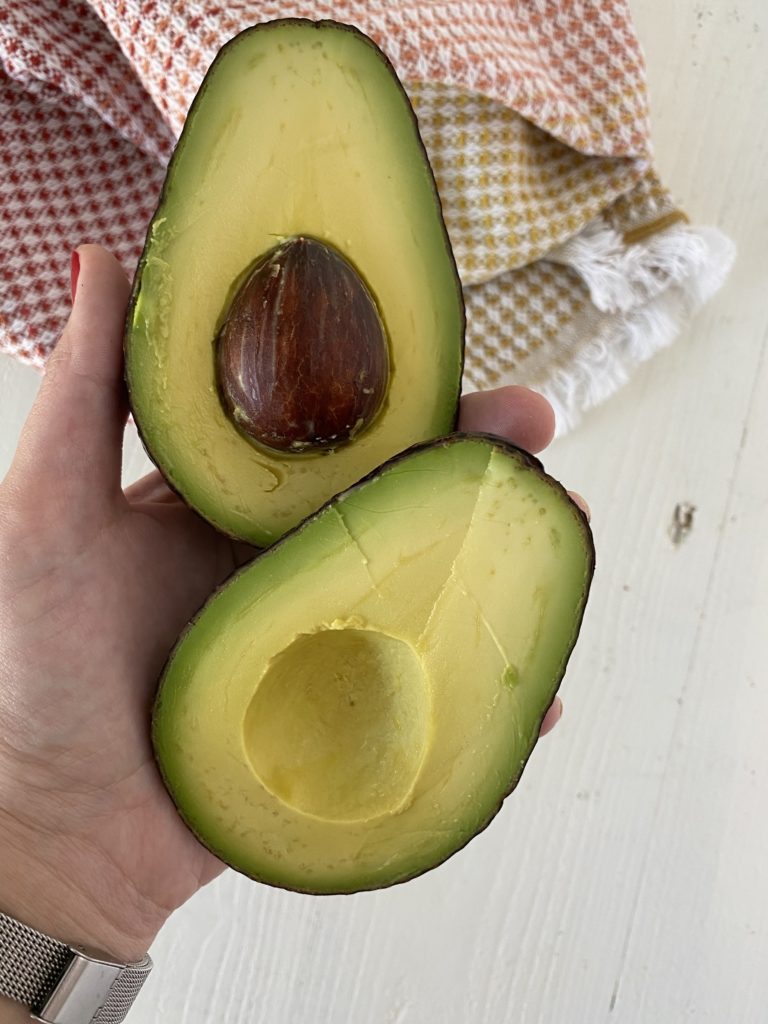
9. Avocado
Why they’re great: Avocados are an incredibly nutrient-dense fruit! They are not only rich in plant-based fats, but also in fiber!
Tip: Simply adding a half avocado to your favorite sandwich or on top of a salad, can help you meet about 25% of your daily fiber needs.
Recommended serving size: 1/2 avocado
- Carbs: 8g
- Fiber: 6.5g
- Sugar: <1g
6 Fruits to pair with fiber and protein
The following list includes fruits that may be more difficult for people with diabetes but still worth eating. They are equally full of vitamins, minerals, and antioxidants, but may need to be combined with other sources of fiber and protein to ensure stable blood sugars after eating. They are not off limits by any means, but may just need some more intentional planning to enjoy them.
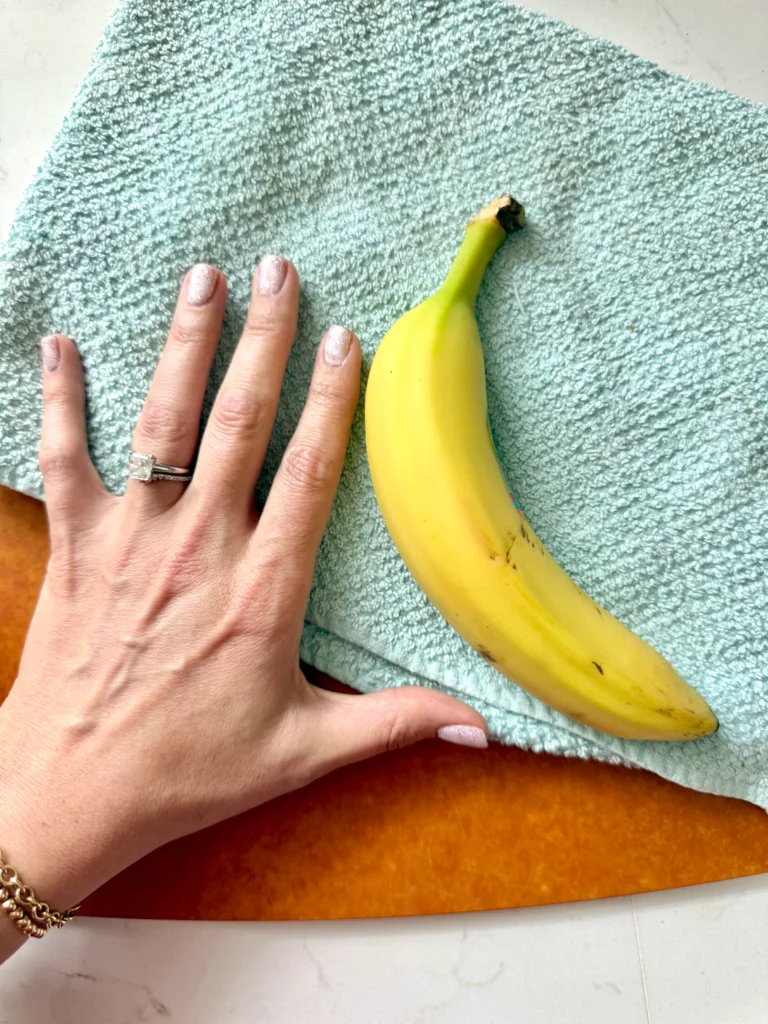
1. Bananas
Bananas, especially when over-ripened, have a higher glycemic index and are higher in carbohydrates than other fruits.
Tip: Stick to small bananas or pair them with a protein source like nuts to help promote stable blood sugars after eating. Or, choose green bananas which are higher in resistant starch.
Recommended serving size: 1/2 large banana or 1 small banana paired with a protein source
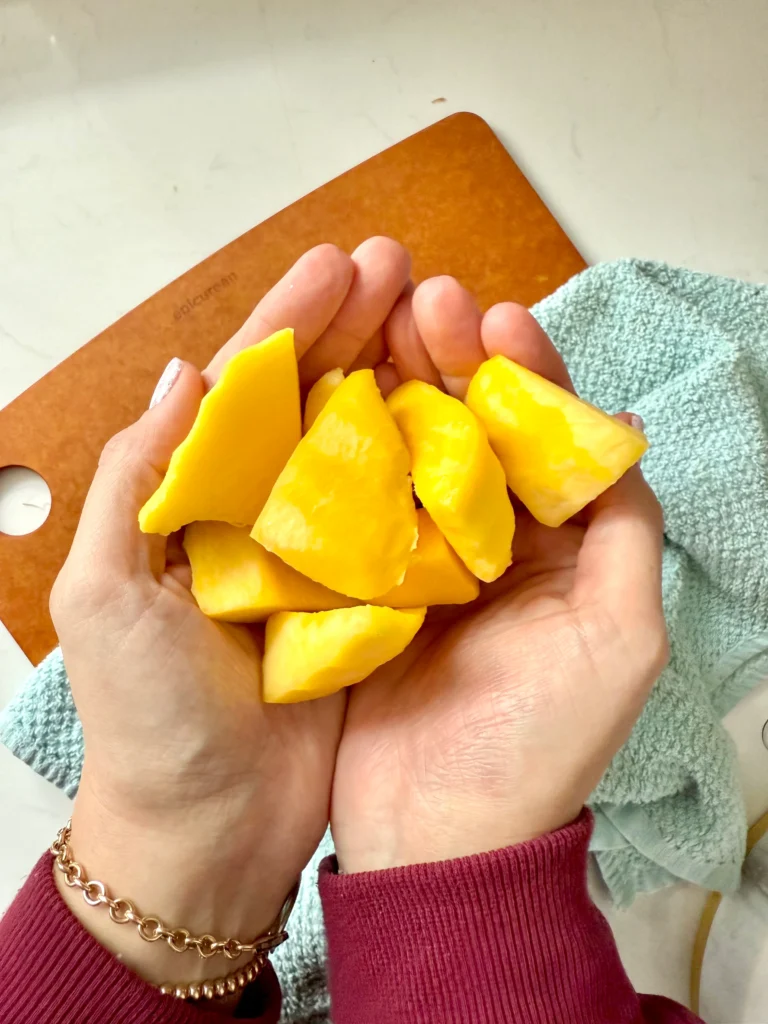
2. Mangoes
Mangoes are delicious but higher in sugar than the fruits we discussed above. But, one study found that eating mangoes may actually be associated with improved blood sugar levels after all!
Tip: Enjoy in small portions and balance with a source of protein or fat.
Recommended serving size: 1 cup mango cubes paired with a protein source
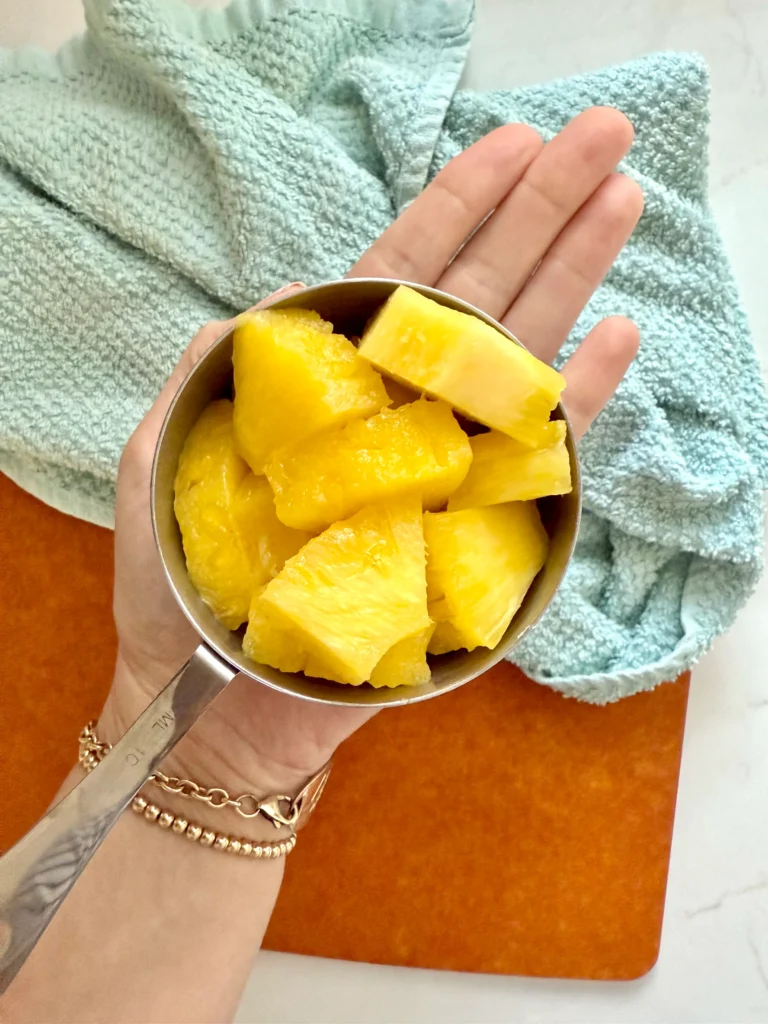
3. Pineapple
Pineapple has a medium to high GI and is relatively low in fiber, leading to quicker carbohydrate absorption, but it does offer plenty of potential nutrition benefits. Like the other fruits on this list, pineapple is high in antioxidants and other nutrients.
Tip: Enjoy pineapple in small portions and balance it with a source of protein or fat.
Recommended serving size: 1 cup pineapple paired with a protein source
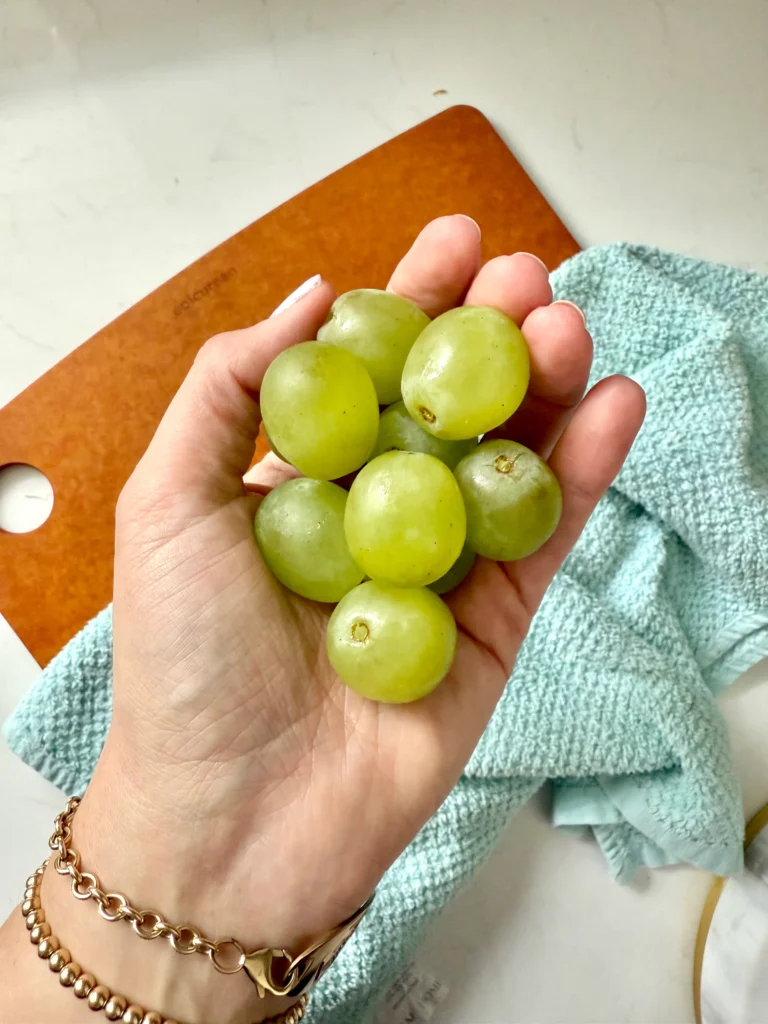
4. Grapes
Grapes are wonderful for increasing antioxidant intake and may help support a healthy heart. And, they are super versatile in different types of recipes. Because they are lower in fiber than other fruits though, you should pair them with a protein source and/or additional fiber to best reap their nutritional benefits.
Tip: Enjoy grapes with a meal or snack that also has fiber and protein.
Recommended serving size: 1/2 cup grapes with 1-2oz of your favorite cheese
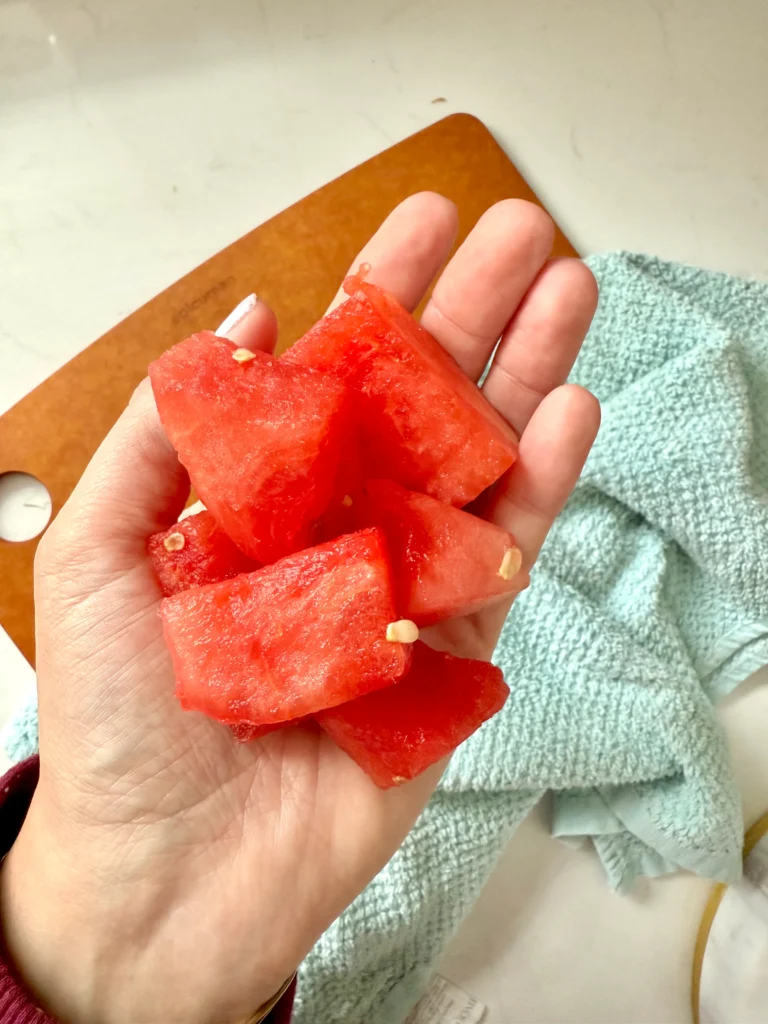
5. Watermelon
Watermelon is one of our higher water content fruits which makes it super hydrating and great for hot summer days. It also offers vitamin C, vitamin A, potassium, and other antioxidants. But, it is a high glycemic index fruit. If eaten in large quantities can raise blood sugar levels quite quickly.
Tip: People with diabetes can enjoy watermelon in small quantities paired with a protein or fiber source to slow down carbohydrate absorption.
Recommended serving size: Enjoy a slice of watermelon (or 1/2 cup cubes) after some physical activity like swimming in the summertime.
6. Dried Fruits
Drying fruit concentrates its sugars, resulting in a higher glycemic load compared to fresh fruit.
Tip: Choose fresh fruit over dried when possible or use dried fruits in moderation as part of a meal. Or, save them for treating a low blood sugar.
Recommended serving size: <1/4 cup paired with a meal or snack that also has fiber and protein.
Worst fruits for diabetes
The following options are not specific fruits but rather forms of fruit that can be difficult for people with diabetes to navigate. These should only be consumed in moderation.
1. Fruit Juices
Why to Avoid: Fruit juice lacks fiber and is absorbed rapidly, potentially causing blood sugars to spike. It is very rich in micronutrients typically but can cause blood sugars to rise quicker than we would like if consumed on its own.
Tip: Stick to eating whole fruits instead of drinking juice most of the time. Save fruit juice for pairing with a meal in small amounts, or use fruit juice for treating low blood sugars.
2. Canned Fruits in Syrup
Why to Avoid: Canned fruits in heavy or light syrup are loaded with added sugars that can raise blood sugar levels very quickly.
Tip: If you’re consuming canned fruits, choose options labeled as “no sugar added” or canned in their own juices or water.
A Quick Note on fruit smoothies for diabetes
If you’re looking for an easy way to incorporate fruit into your day in a balanced way, I highly recommend smoothies! Fruit smoothies are a great option for people with diabetes because they combine your favorite fruits with protein and fiber sources as we mentioned above. And, they can also be a great way to get in more veggies. You can customize the ingredients to get the flavors you love and hit your nutrition goals for fiber and protein. Check out some of my favorite smoothie recipes here.
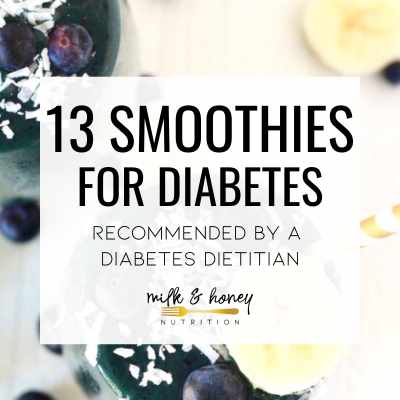
Key takeaways: Tips for enjoying fruit with diabetes
- Pair fruits with protein, plant-based fat, and other fiber sources to slow down carbohydrate absorption (for example: apple slices with peanut butter).
- Stick to recommended serving sizes, such as one medium apple or 1 cup of berries.
- Enjoy fruit throughout the day instead of all at once.
- Use a blood glucose monitor or continuous glucose monitor (CGM) to understand how different fruits affect your blood sugar.
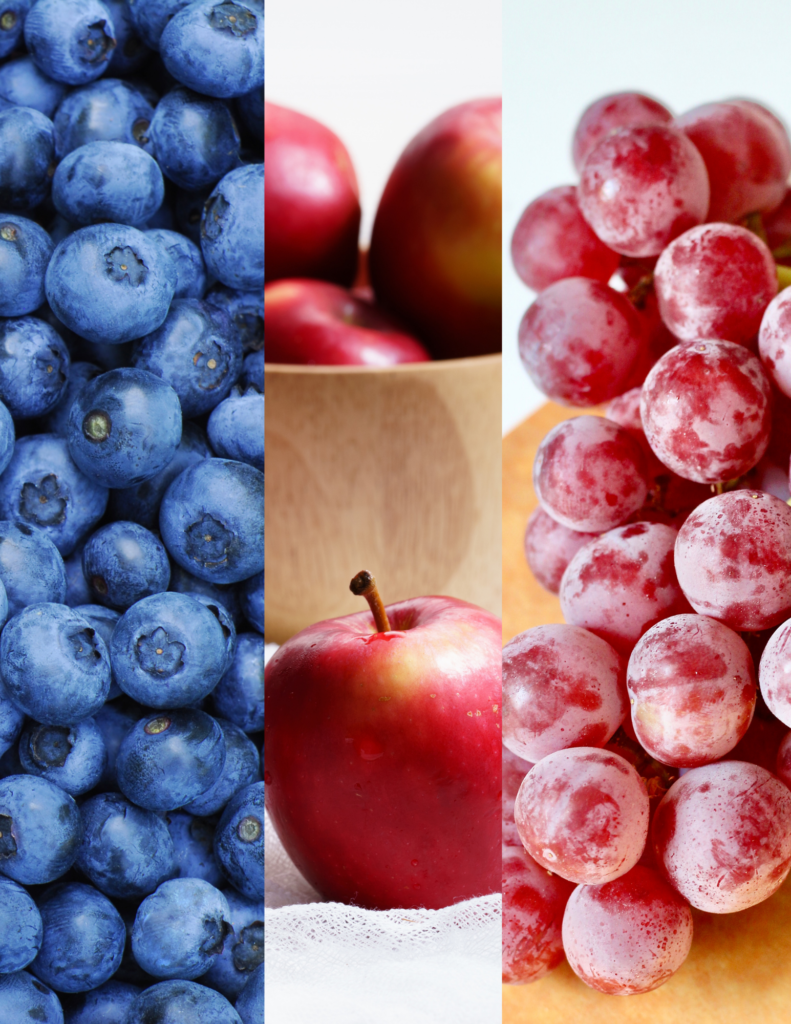
Conclusion
Fruits can and should be part of a balanced diet for diabetes, but being aware of how they can impact blood sugar levels is important. Focus on low-GI, high-fiber options like berries, citrus fruits, and apples while enjoying lower-fiber fruits alongside other protein and fiber sources. By pairing fruits with fat, fiber, and protein and keeping an eye on portion sizes, you can enjoy fruit and keep your blood sugar levels stable.
Sources
- Reading Food Labels, ADA.
- International Tables of Glycemic Index and Glycemic Load Values: 2008
- Blueberries, Food Data Central, USDA.
- Raspberries, Food Data Central, USDA.
- Blackberries, Food Data Central, USDA.
- Bioactive Compounds and Antioxidant Activity in Different Types of Berries, 2015.
- Cherries, Food Data Central, USDA.
- Polyphenol-rich tart cherries (Prunus Cerasus, cv Montmorency) improve sustained attention, feelings of alertness and mental fatigue and influence the plasma metabolome in middle-aged adults: a randomised, placebo-controlled trial, 2022.
- Strawberries, Food Data Central, USDA.
- Apples, fuji, with skin. Food Data Central, USDA.
- Oranges, Food Data Central, USDA.
- Citrus fruits as a treasure trove of active natural metabolites that potentially provide benefits for human health, 2015.
- Pears, Food Data Central, USDA.
- Kiwifruit, Food Data Central, USDA.
- Dragon fruit, Food Data Central, USDA.
- Papayas, Food Data Central, USDA.
- Bananas, Food Data Central, USDA.
- Bananas, overripe, Food Data Central, USDA.
- Mango, Ataulfo, Food Data Central, USDA.
- Mango supplementation improves blood glucose in obese individuals, 2014.
- Pineapple, Food Data Central, USDA.
- Grapes, red, seedless, Food Data Central, USDA.
- Grapes and Heart Health Research
- Watermelon, Food Data Central, USDA.
- Avocado, Hass, Food Data Central, USDA.

